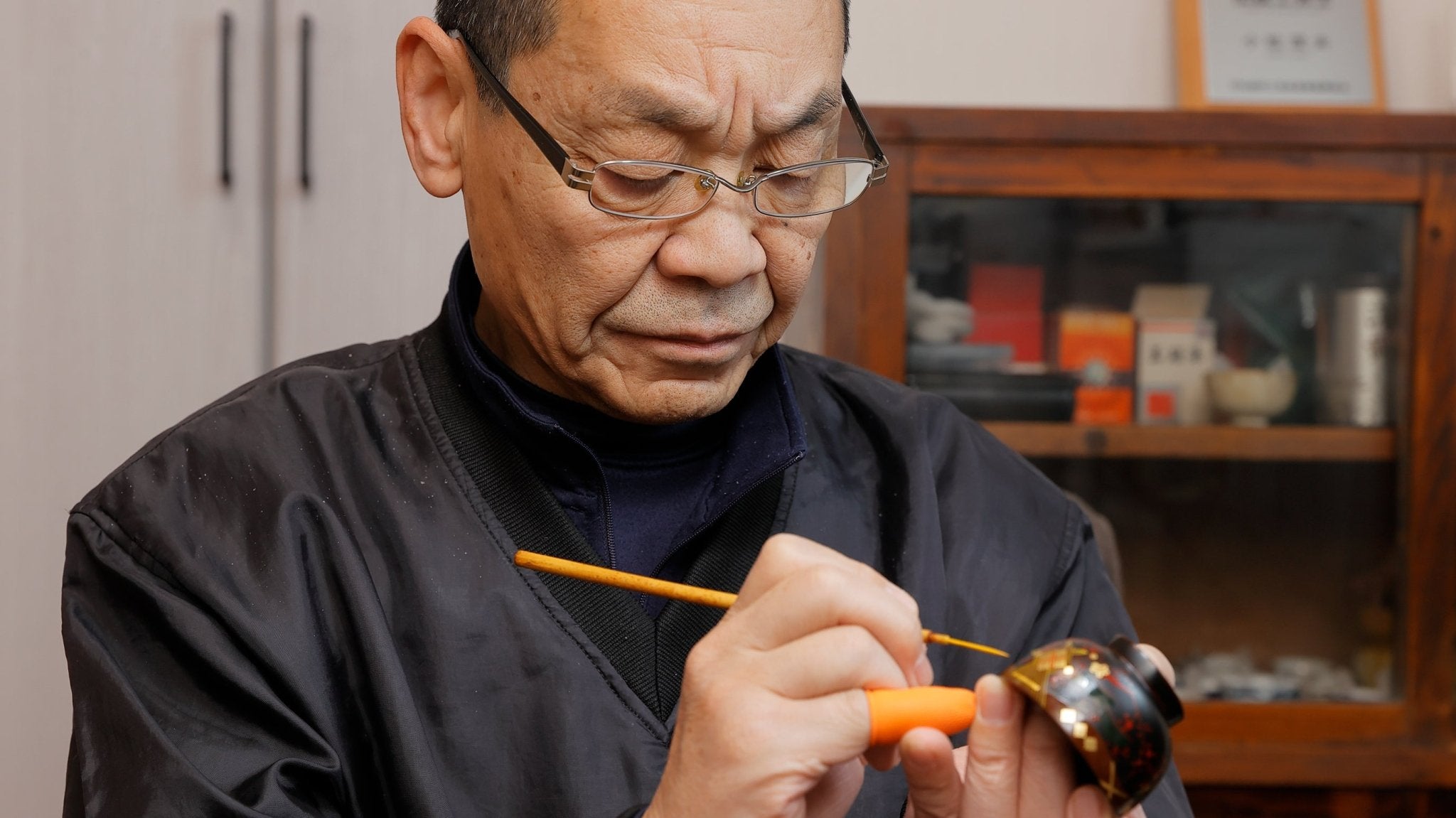
Mastering Tradition and Innovation: Art of Aizu Lacquerware
Written by Team MUSUBI
In the serene and culturally rich region of Aizu (modern-day Fukushima Prefecture) in Japan, where tradition melds seamlessly with the rhythm of modern life, resides an artisan whose hands have shaped more than just lacquerware. Komatsu Shigeo, a lacquer artist, carries the torch of an ancient craft that has illuminated the Japanese art scene for centuries.
In this exclusive interview, Komatsu delves into the depths of Aizu lacquerware, sharing insights on its unique characteristics, the intricate processes involved, and his personal journey in this venerable art form. His words paint a vivid picture of a craft that is not just a testament to aesthetic beauty but also a reflection of Japan's enduring cultural heritage. As we explore the world of Aizu lacquerware through Komatsu's eyes, we discover not just the artistry in his work but the heartbeat of a tradition that continues to evolve and enchant in the modern era.
tables of contents
The Distinctiveness of Aizu Lacquerware

Aizu lacquerware embraces an efficient division of labor, which, according to Komatsu, results in exceptional performance. This approach allows for the creation of high-quality, affordable lacquerware, making it accessible to a broader audience.
The Aesthetics of Vibrant Colors and Motifs

The Intricacies of Aizu Lacquerware Techniques

Challenges and Joys of Lacquer Craftsmanship

When asked about the rigors and joys of his profession, Komatsu speaks about the challenges of working with natural materials like lacquer. Maintaining a clean workspace and adjusting to varying humidity and temperature conditions are crucial for achieving desired results. The satisfaction of seeing a piece turn out exactly as envisioned is unparalleled, reflecting the deep passion and commitment inherent in this craft.

Future Prospects and Current Endeavors

In his concluding remarks, Komatsu acknowledges the difficulties facing the lacquerware industry. He expresses hope for the future, referencing the efforts in Aizu to cultivate a new generation of craftsmen through the Aizu Lacquerware Technology Successor Training School. As an instructor, he is committed to passing on his knowledge and skills to the younger generations, entrusting them with the responsibility of carrying forward the legacy of Aizu lacquerware into new realms.
Komatsu's insights not only shed light on the intricacies of Aizu lacquerware but also reflect the dedication and passion of a craftsman deeply rooted in tradition yet looking forward to the future. His commitment to his craft and his vision for the future of Aizu lacquerware offer an inspiring perspective on the enduring relevance and evolution of traditional crafts in contemporary society.







2 comments
@Robert Taylor- Thank you for your kind words—knowing our lacquerware and the master’s passion resonate with you all the way in Scotland means a great deal. Please rest assured, we are dedicated to preserving these traditional skills for generations to come. If you have any questions or wish to learn more, we’re always here to help.
Best regards,
Team Musubi
Team Musubi
This lacquerware is truly magnificent, and when I hear the master’s words, I feel the passion, consideration and beauty of possessing such beautiful and functional art work.
I live in Scotland, but have always admired the exquisite crafts of Japan and its artisan heritage.
Please do not allow these skills to be lost, as this is the soul of Japan.
Yours Respectfully
Robert Taylor
Robert Taylor
Leave a comment
This site is protected by hCaptcha and the hCaptcha Privacy Policy and Terms of Service apply.